Related Research Articles

The Cree or nehinaw are a North American Indigenous people. They live primarily in Canada, where they form one of the country's largest First Nations. More than 350,000 Canadians are Cree or have Cree ancestry. The major proportion of Cree in Canada live north and west of Lake Superior, in Ontario, Manitoba, Saskatchewan, Alberta, and the Northwest Territories. About 27,000 live in Quebec.

The Delaware River is a major river in the Mid-Atlantic region of the United States and is the longest free-flowing (undammed) river in the Eastern United States. From the meeting of its branches in Hancock, New York, the river flows for 282 miles (454 km) along the borders of New York, Pennsylvania, New Jersey, and Delaware, before emptying into Delaware Bay.

Brantford is a city in Ontario, Canada, founded on the Grand River in Southwestern Ontario. It is surrounded by Brant County but is politically separate with a municipal government of its own that is fully independent of the county's municipal government.

The Lenape, also called the Lenni Lenape and Delaware people, are an Indigenous people of the Northeastern Woodlands, who live in the United States and Canada.
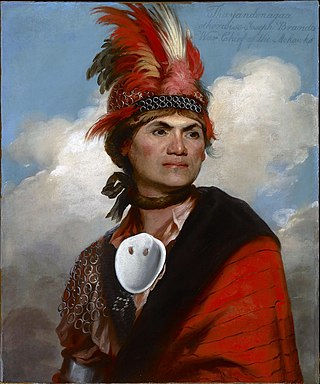
The Mohawk, also known by their own name, Kanien'kehà:ka, are an Indigenous people of North America and the easternmost nation of the Haudenosaunee, or Iroquois Confederacy.
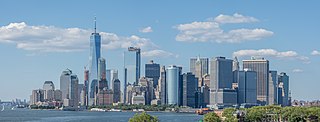
The Northeastern United States is one of the four census regions defined by the United States Census Bureau. Located on the Atlantic coast of North America, the region borders Canada to its north, the Southern United States to its south, the Midwestern United States to its west, and the Atlantic Ocean to its east.
In Canada, an Indian reserve or First Nations reserve is defined by the Indian Act as a "tract of land, the legal title to which is vested in Her Majesty, that has been set apart by Her Majesty for the use and benefit of a band." Reserves are areas set aside for First Nations, one of the major groupings of Indigenous peoples in Canada, after a contract with the Canadian state, and are not to be confused with Indigenous peoples' claims to ancestral lands under Aboriginal title.

Six Nations is demographically the largest First Nations reserve in Canada. As of the end of 2017, it has a total of 27,276 members, 12,848 of whom live on the reserve. These nations are the Mohawk, Cayuga, Onondaga, Oneida, Seneca and Tuscarora. Some Lenape live in the territory as well.

Moravian 47 is an Indian reserve located in Chatham-Kent, Ontario, with an area of 13 square kilometres (5.0 sq mi). It is occupied by the Delaware Nation at Moraviantown First Nation, a part of the Christian Munsee branch of the Lenape, and is commonly known as Moravian of the Thames reserve. The resident registered population is 457, with another 587 band members living off the reserve.

The Treaty of St. Mary's may refer to one of six treaties concluded in fall of 1818 between the United States and Natives of central Indiana regarding purchase of Native land. The treaties were
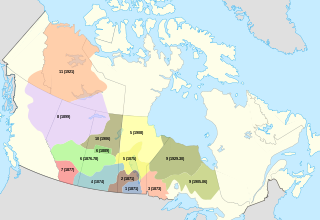
Treaty 6 is the sixth of the numbered treaties that were signed by the Canadian Crown and various First Nations between 1871 and 1877. It is one of a total of 11 numbered treaties signed between the Canadian Crown and First Nations. Specifically, Treaty 6 is an agreement between the Crown and the Plains and Woods Cree, Assiniboine, and other band governments at Fort Carlton and Fort Pitt. Key figures, representing the Crown, involved in the negotiations were Alexander Morris, Lieutenant Governor of Manitoba and The North-West Territories; James McKay, The Minister of Agriculture for Manitoba; and William J. Christie, a chief factor of the Hudson's Bay Company. Chief Mistawasis and Chief Ahtahkakoop represented the Carlton Cree.
First Nations in Ontario constitute many nations. Common First Nations ethnicities in the province include the Anishinaabe, Haudenosaunee, and the Cree. In southern portions of this province, there are reserves of the Mohawk, Cayuga, Onondaga, Oneida, Seneca and Tuscarora.
First Nations in Manitoba constitute of over 160,000 registered persons as of 2021, about 57% of whom live on reserve. Manitoba is second to Ontario in total on-reserve population and in total First Nation population.
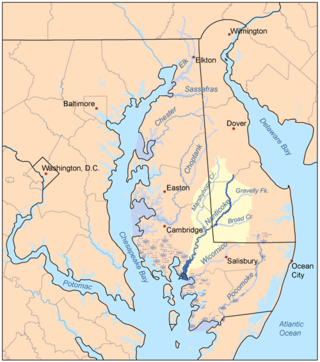
The Nanticoke people are a Native American Algonquian people, whose traditional homelands are in Chesapeake Bay and Delaware. Today they live in the Northeastern United States and Canada, especially Delaware; in Ontario; and in Oklahoma.
Ohsweken is a dispersed rural community located within the Six Nations of the Grand River, in the County of Brant, Ontario, Canada. Approximately 300 of the 2,700 homes on the reserve are in Ohsweken, and it is the site of the reserve governmental and administrative offices.
Mississaugas of the Credit First Nation is a Mississaugas, an Ojibwe sub-group, First Nation located near Brantford in south-central Ontario, Canada. In April 2015, MCFN had an enrolled population of 2,330 people, 850 of whom lived on the MCFN Reserve. The first nation governs the 2,392.6 ha parcel of New Credit 40A Indian Reserve known as Reserve 40B near Hagersville, Ontario. This reserve is located beside the Six Nations of the Grand River, near Brantford.
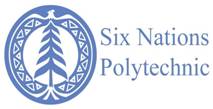
Six Nations Polytechnic (SNP) is a Haudenosaunee-governed Indigenous institute on Six Nations of the Grand River First Nation. SNP is an Indigenous Institute, the third pillar of post-secondary education in Ontario, as recognized by the Indigenous Institutes Act of 2017, The Six Nations of the Grand River First Nation are the Mohawk, Cayuga, Onondaga, Oneida, Seneca, and Tuscarora. The Six Nations of the Grand River First Nation reserve acreage at present covers some 46,000 acres (190 km2) near the city of Brantford, Ontario. Six Nations Polytechnic has two campuses, one located in Ohsweken and one located in Brantford.
The Oneida First Nation is an Oneida First Nation in southern Ontario, and a member of the Six Nations of the Grand River. Its reserves include the shared reserves of Glebe Farm 40B and the Six Nations of the Grand River First Nation.
The Six Nations of the Grand River Elected Council is the governing body of Six Nations of the Grand River established under the Indian Act in 1924. The Elected Council consists of one Grand Chief and nine Councillors elected to four year terms, with the current council elected in November 2019.
References
- ↑ "Delaware First Nation opens educational village to public". CBC . 19 June 2014. Retrieved 24 February 2023.
- ↑ "First Nation regains land settled by their ancestors". chathamthisweek. Retrieved 2023-02-24.